Basics
Shuffle steps are usually split each tempo into two phases, songs usually follow a 4/4 structure. To differentiate the steps between tempos I'm going to use the tempo number they come from followed by an -and so the structure will be: 8-and, 1, 1-and, 2... Where the 1 is the phrase starter.
Most of the steps don't have names so I've put one that felt it fits.
To specify the relative position of body parts, I'm using an imaginary clock, so 12 means upfront, 3 our right, 6 our back and 9 our left.
The steps below can be danced with "slow" or quick tempos. It's best to learn with the slow ones as they build the muscle memory to be able to skip parts of it as you move to higher tempos.
Dance routine⚑
After several iterations I've come to this routine:
- Start dancing a bit to low tempo songs, I've got a playlist with increasing tempo songs, the aim is to start warming up and remember what I've learnt the last time.
- Once you're warmed up dance some songs to your current tempo level.
- Then put some songs a little above your tempo level and try to speed up your running man and T-Step.
- Improve this notes with the new discoveries.
- Analyze a video to extract some steps.
- Add one or two songs to the shuffle playlist. Prepend the song name with the bpms (it's better to measure them manually as automatic software tends to fail badly).
Running man⚑
The running man is the basic step of Melbourne shuffle, so make sure to master it.


- 8-and: Both legs straight under our body, right leg lifted up with knee up front. Weight lies on the left foot.
- 1: Right foot kicks forward, left foot slides backward, in a way that each travel the same distance. Weight is evenly shared between the feet.
- 1-and: Right foot slides backwards, right foot goes up, knee to the front. Weight lies on the right foot.
- 2: Mirrors 1.
- 2-and: Mirrors 1-and and it's equal to 8-and.
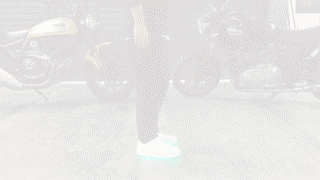
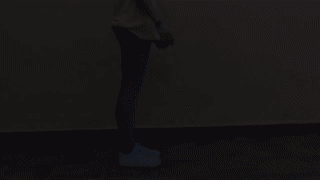
Once you feel comfortable with it, start going around the room doing running mans, so you get a grasp of doing it without being stationary.
The foot going forward can land in the floor flat, heel first or toes first.
Quick tempo Running man⚑
As the tempo speeds up, even if it seems there is no time to stop in the 1-and or 2-and they do manage to do so. To reach there, I'd put a song a little bit quicker than you are comfortable and:
- Get familiarity with the movement of the foot in the ground: Start with your basic running man stance left foot in front. When the 1 comes, try to reach the 1-and focusing to lift your right knee and stomp in the 2. Rest a pair of beats and then try the other foot. Keep on doing it till you are comfortable doing this movement.
- Then try to do 2 complete running mans.
- Then dance :).
For me the most difficult part is to bring back the non dominant leg backwards, to get used to the movement I slided backwards with that leg several times, then do three running mans starting with that leg, rest, and then do another three starting with the other one.
T-Step⚑
The T-Step is other basic step of Melbourne shuffle, used to do lateral movement.
Learning the T-Step⚑
The following instructions are a nice way to get the grasp of the movement, but we'll change them slightly to be able to link it with the other moves.
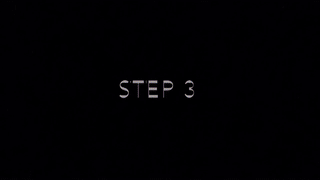
- 8-and: Both legs straight under our body, right leg lifted up with knee up front. Weight lies on the left foot, which looks at 1.5 although the rest of you look at 12.
- 1: Right foot kicks sideways towards 3, try to leave the foot at 90 degrees with your leg and that it doesn't wobble, so it's a clean kick. The weight is on the left leg's toes and it pivotes over them till it points to 10.5. Waist ends up turned.
- 1-and: Right foot is retrieved till the left leg's knee, keeping the base parallel to the ground. Weight is on the left leg's heel and pivotes over it to reach the 1.5 position. Waist is straight now.
- 2: Equal to 1.
- 2-and: Equal to 1-and.
- 3: Right foot goes front, left foot goes back to the running man stance.
To move to the other side is the mirror.
Keep the leg that holds you a bit bent so you don't harm your knee when twisting.
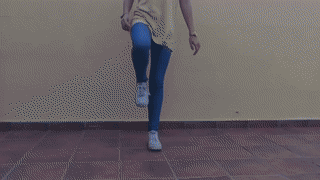
The usual basic pattern of Melbourne shuffle is doing some running mans pointing at 10.5, then doing a side step (like the T-step) to the right, then another running man pointing to 1.5, finishing with another side step to the left.
To join the T-Step with the running man, when you are in the 1-and make it the 8-and of the T-Step.
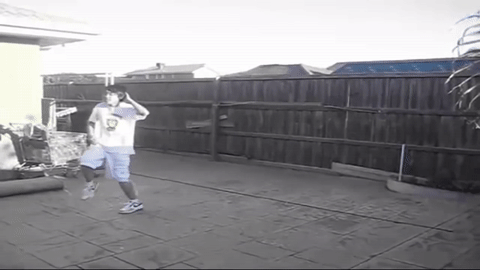
Francis T-Step⚑
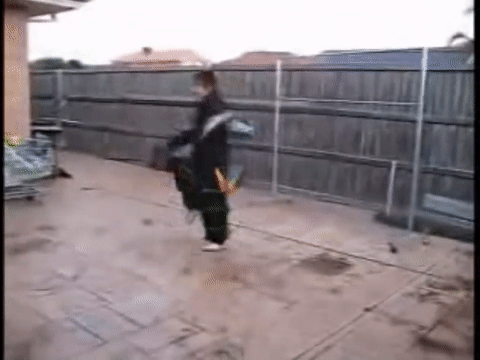
I've seen that Francis when finishes his T-Step with the other leg. So instead of moving the right leg in front and slide back the left (if we are going to the right), he:
- 1-and: Equal to normal T-Step.
- 2: When you put your right foot down, shift your weight till it's evenly spread between feet.
- 2-and: Switch your weight to the right foot, lift the left while you keep on shifting your body weight to your 3.
- 3: Left foot touches ground at your 1.5, slide the right back to the running man stance.
What I like of this variation is that you conserve the energy, it makes total sense. What it doesn't is that he is dancing with sandals (¬º-°)¬.
Try to move from side to side with 2 T-Steps in between using this variation.
Quick tempo T-Step⚑
To improve the speed of your T-Steps, I'd put a song a little bit quicker than you are comfortable and:
-
Get familiarity with the movement of the foot in the ground:
- Start with your right knee up in position 8-and of the T-Step.
- First focus only to move the feet that you've got in the floor, so when the 1 comes, start pivoting the foot a pair of tempos.
- Put your right foot down and lift the left knee.
- Wait 3 or 4 tempos and when the 1 comes, start going to the other side.
-
Once you are comfortable with the movement, repeat the same exercise but doing the kicks.
- Then instead of finishing with both feet under your body, finish in a running man stance.
- Then instead of starting with your knee up, start from the running man stance.
Future steps⚑
- Sacco kicks at 14:50, 15:49, 17:08
- Rocky kicks at 13:26 or 27:58. Rocky version at 1:19, 2:34, 7:29
- Recce kicks at 15:56 (explanation) or 27:43 or 28:05.
- Reverse kick spin at 18:01 or 27:65. Rocky version at 1:18, 2:16, 2:55, 3:26, 3:59, 4:58, 6:24, 8:17, 8:35, 15:00, 15:55
- Forward kick spin at 19:33. Rocky version at 2:20, 3:16, 3:47, 8:40, 8:49
- Rocky side to side at 15:04, 16:08
Beats per minute progression⚑
- 2020-09-07: First time to be able to dance a song at 118bpm to C2C - Happy.